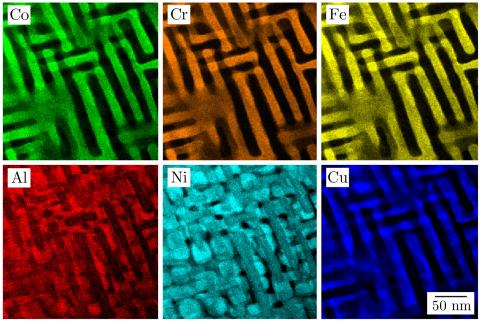High Entropy Alloys (HEAs) are an intriguing new class of metallic materials, based on a novel approach to materials design. Contrary to conventional alloying, these materials do not have a principal component, but are instead based on near equiatomic mixtures of five or more elements. Traditional metallurgical wisdom would expect the microstructure of these materials to contain a number of intermetallic phases, yet surprisingly, this has not to been the case. Experimental studies have reported single or dual phase as-cast microstructures, and corresponding diffraction data have indicated that these phases have simple crystal structures, such as fcc or bcc.

To rationalise these observations, it was suggested that entropy of mixing in these systems must be very high, extending the mutual solubility of different elemental species and stabilising simple structured solid solutions with respect to the formation of intermetallic compounds. Studies of such alloys have identified a number of promising properties, including high strength, good wear characteristics and excellent corrosion resistance, which make these materials industrially relevant. However, despite a huge number or research articles having been published in this area in the last ten years, much of the underlying science of these materials remains under debate.
Within the UTC, our work focuses on two main areas; 1) gaining a fundamental understanding of the phase metallurgy of near equiatomic HEAs, and 2) developing novel alloys based on the HEA concept for use at elevated temperature.

